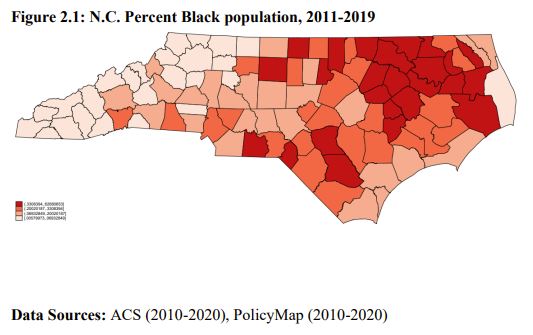Highlighting UNC Public Policy Alum Research
April 1, 2022

To offset the costs of updating aging wastewater and drinking-water systems, water providers incrementally increase consumers’ water bills. A 2017 study found that while consumers may not see large absolute increases in their water bills, incremental increases are more detrimental to low-income households relative to high-income households, and even small increases to their monthly bills can create affordability challenges. Because there are no federal polices to protect consumers from water shutoffs in the United States, providers address accounts unable to absorb increased costs by shutting off their water supply.
Abigail Holdsclaw, a 2021 graduate of UNC, utilized longitudinal EFC North Carolina water and wastewater data to address this policy challenge in her honors thesis in UNC’s Public Policy Department. Her work capitalized on the rich data made available by the Environmental Finance Center through their state rates dashboard. Her work illustrates the value of EFC’s data and tools for utility managers, researchers, and policy makers, especially those focused on affordability.
Motivated by the United States’ water affordability crisis and its documented disproportionate impact on non-white communities, her thesis examined disparities in water affordability in North Carolina by racial and ethnic groups via a quantitative analysis of a nineyear water provider-level, panel data set. Her regression models revealed that residential water bill costs increase as a N.C. county’s Black population increases., and the effect is even more pronounced for wastewater bills.
These findings demonstrate the importance of infrastructure quality on water affordability, and quantify the racial disparities in water affordability across the state of North Carolina. Results indicate that Black North Carolinians face disproportionate water affordability challenges due to systemic inequalities in wastewater infrastructure quality. The highest water bills are consistently paid by customers clustered in the Northeast region of the state, in rural counties that have the highest proportions of Black residents, and have the lowest median household incomes. These findings motivate the need for shut-off protections, targeted affordability assistance, and infrastructure investment in the state’s wastewater systems to prevent consumers from absorbing the costs of system repairs.
Holdsclaw’s complete thesis can be accessed here.
